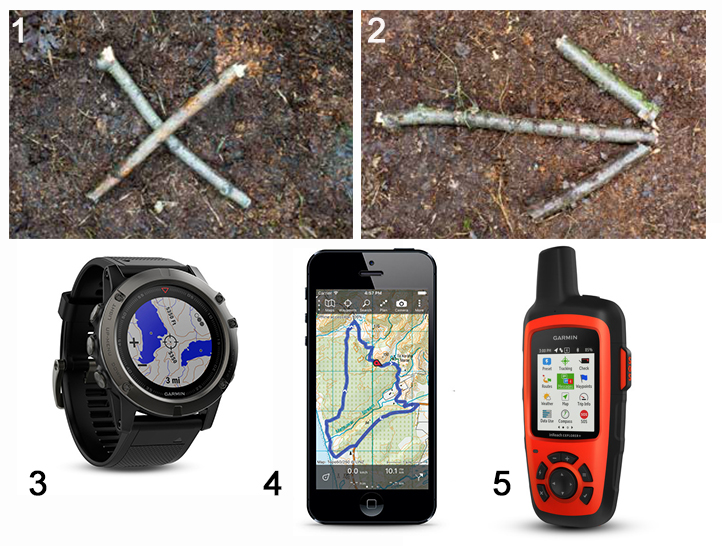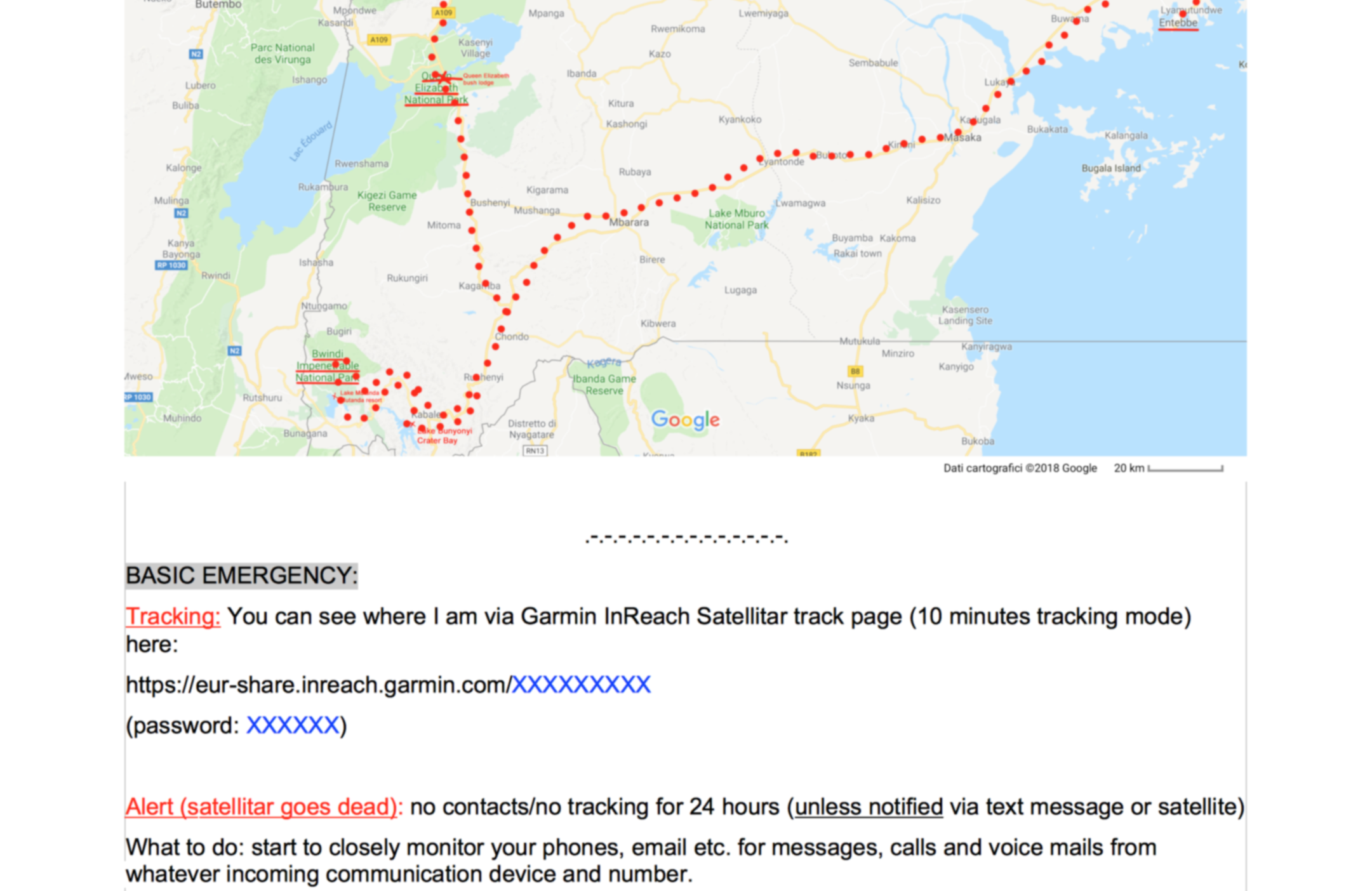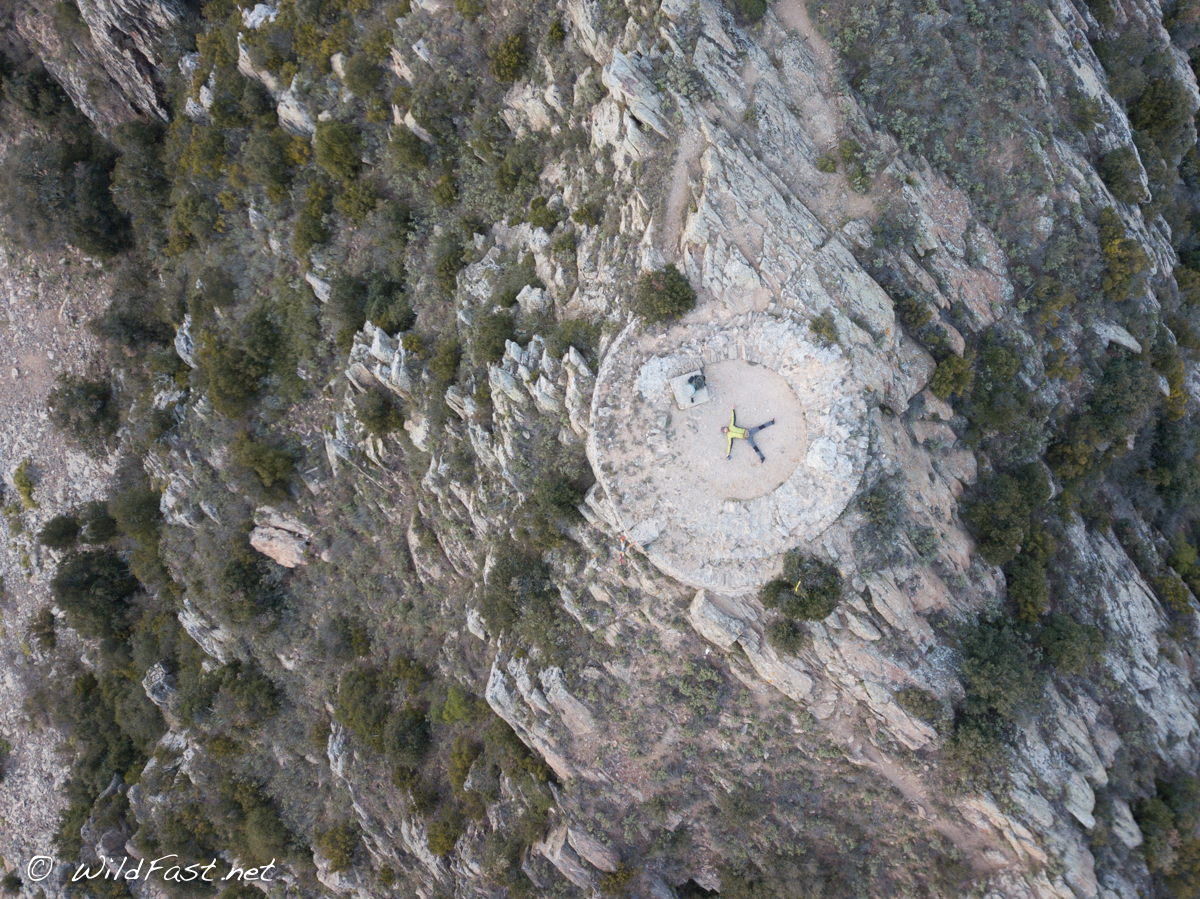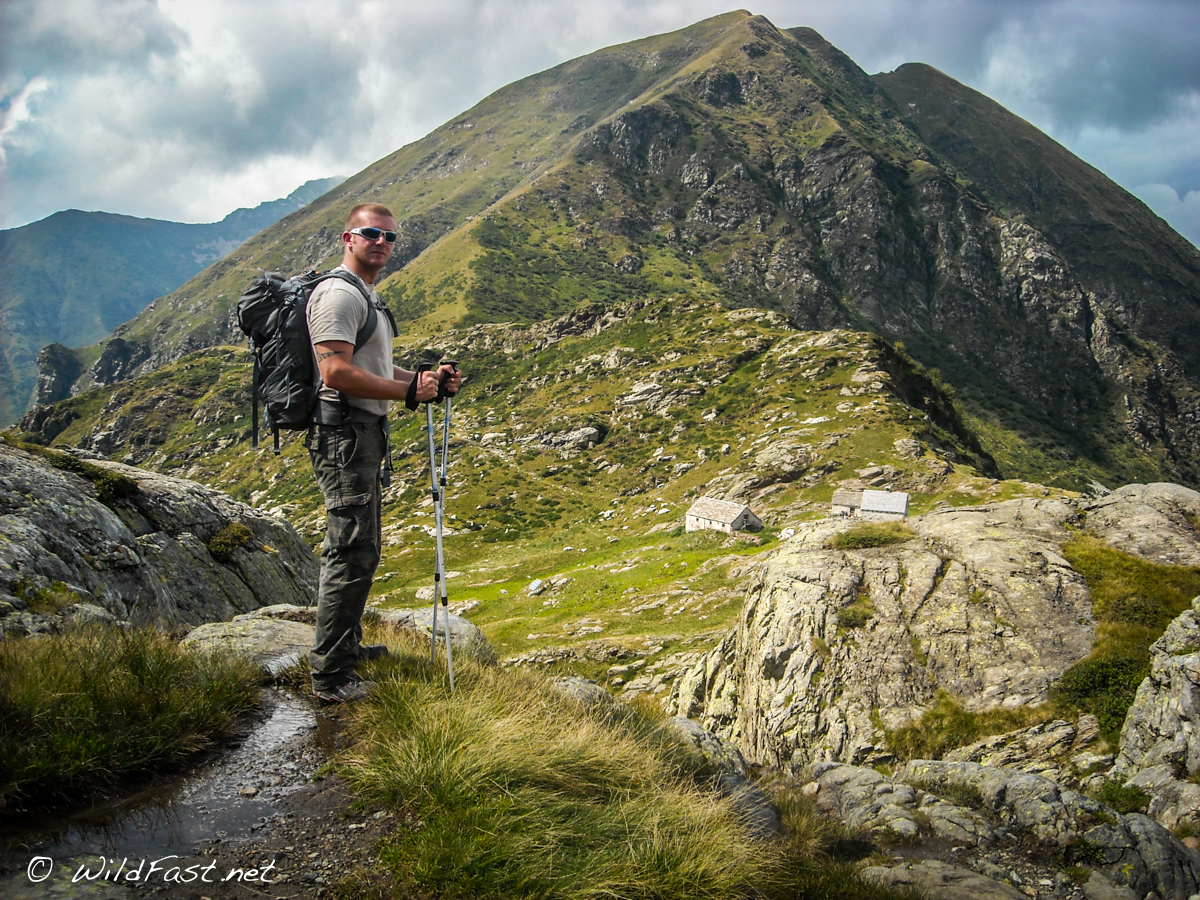You certainly know about Aron Ralston, stuck for six days in a Utah canyon before he freed himself by amputating his arm with a “multi-tool” knife to avoid death by dehydration and hypothermia.. Don’t wanna be part of the long list of people that experienced such situations? Read this article…
Aron Ralston, Juliane Koepcke, Jose Salvador Alvarenga, Michael Benson, Harrison Okene, etc etc..they all have something in common: they got into big problems getting “close calls” just for being more “venturous” than “adventurous”. What do I mean? That if you travel, especially if you “wild travel” or you like adventures and off-the-grid experiences, of course you are more likely to take risks, especially if you travel solo.
– WHY?
What’s the difference between venture and adventure?
“Venture: undertake a risky or daring journey or course of action.”
“Adventure: an unusual and exciting or daring experience.”
Here we are: “undertake”, “underestimate”. Two words that doesn’t have to apply to travelling and experiencing. It’s 2018: we have a lot of technology, we have mails, we have social medias..and tons of cheap ways to save our ass even in the worsts conditions. So why not using it?
In my years in the airborne, I faced into some risky situation but I got always teached to have a plan A and a plan B (and eventually even a plan C)..besides of always knowing where I am and have someone else knowing it too, that is via a 1 or 2 ways communication or, rudimentally, via hand-made ground signs. Especially if you are travelling solo.

1-2. Even just a couple of branches can indicate your path helping a lot in case of emergency.. 3. A Garmin Fenix 5X with maps – 4. An Apple iPhone with is built-in gps – 5. A satellitar Garmin InReach+ Explorer
This should make you understand how much is important to plan a trip and to eliminate the most variables as possible. Aron Ralston would still have his arm if he just have told to someone where he was headed to…
“Anything that can go wrong will go wrong” and “If one thing goes wrong, everything else will, and at the same time”
No matter how incredibly experienced you are and how precisely you have prepared for your trip: an accident or emergency can happen to anybody, at any time. A fluke accident, a flare up of a pre-existing medical condition or even the odd event like an acute altitude sickness or whatever else can change your trip from fun to damage-control-mode in an instant. Are you skilled enough to solve every situation? Are you able to manage high-stress and maybe pain for long?
But mainly: can you afford the fact that you will blame yourself every second of the bad-experience for having missed and underevalued something so easy and effective? The life you save might be your own!
– HOW?
What do you get in this article?
The main purpose is to make a fast, easy and effective trip plan you can modify or upgrade to your next trips.
I’ll help you in creating a template of it step by step and I’ll explain you how to use it and its limitations, besides who you should leave your trip plan with.

An example of my trip plan
What you don’t?
A reference on medical treatment for an emergency. If you are interested into it, you can find a really good emergency reference guide here; even if the best way is to get a chance to take part to a presential course.
Let’s make your Trip Plan!
We will make a plan for a “moderate” risk trip. Later on, you can modify it removing or adding informations depending on the risk level of your trip.
Important: whatever country are you from, I strongly suggest you to make the plan in english. Or at least, have a copy translated. Wherever you go in the world, english is the most spoken language and there is always someone able to read it and speak it. You will accelerate a lot and eventual rescue.
1. Personal infos
You want to inform whoever will get this plan, even if a well known person, about your personal infos such as:
. Name and Surname, Age, Gender, Nationality and where you live.
. Passport number.
. Age, height and weight (rescuing a 120kgs man is different than a 65kgs..); eyes and hairs.
. Medical history ( if you have something relevant which rescuers and paramedics should know)
. Known allergies
. Blood type
. Languages spoken
. Additional infos such as your experience in traveling, hiking or something related, eventuals qualifications..
2. General itinerary
. Total planned days of travel
. Your initerary day to day as far as you know, i.e.:
D1 – June, 04th 2018
Arrive by air in Johannesburg at about 01:50pm (company: African Air) – Visa application ID: 555666777
Overnight: Holiday Inn Pretoria
D2 – June, 05th 2018
Heading west to Mafikeng then south-east to Motlosana by 4×4 (about 6 hours)
Overnight: camping in Motlosana
. Which days are you travelling solo and which ones with a mate, a guide, a group…
. Infos and contact numbers about the tour operator, the guide, your mate…
. An easy photoshopped google map with the main known path you will walk.
3. Basic emergency
. Tracking: if you have a device such as a Garmin InReach+ Explorer or even just an iPhone or whatever device able to live tracking your movements, you can add a link to its page and, eventually, explaining how to do it and whatever user/password can be needed.
. Alert: a kind of “plan B” if you run out of battery on your localisation devices and don’t want to alarm your EC (emergency contacts). You can describe a protocol your EC have to follow in this case.
4. Emergency contacts
. Locals emergency numbers of the country you go already “on the go” such as:
– your country embassy in the visited country
– police/sar headquarters
. Personal Emergency Contacts (leave the trip plan with trusted persons):
– how to select an emergency contact to give your trip plan to? Some important factors to consider are:
* level headed and reliable: usually a close family member or one of your trusted friend who can monitor your trip and, in an emergency, is able to do the right thing managing the stress without drama
* familiarity with the area: it is not always possible, but is definitely a clear added value.
* responsiveness: nowadays, especially for higher risk trips, we might be communicating directly or indirectly with our emergency contacts. This could be indirectly via location-check-ins or tracks from devices like a Spot or inReach (read my article about), or directly like text messages from an inReach/iPhone or a call form a satellite phone. You want your ECs to closely monitor these communications and quickly respond to things like an emergency or if your location hasn’t moved in 24 hours and you haven’t notified them as to why.
* english: you want your ECs to be able to listen, understand and communicate clearly in english. Mandatory.
5. Maps, paper and electronic versions
. That is, explaing which locations devices/ways you have with you such as: satellite devices, gps, smartphone and even paper maps and compass.
6. Communication and tracking
. Detailed explaination of how your EC/rescuers can contact you and when.
. Detailed explaination of how your EC/rescuers can track you.
7. Notable gear
. This point really depend of the kind of the trip you are up to; it can be:
– What you normally wear (type/colors etc..)
– What you normally have with you (cameras, lenses, laptops, backpack, lights, knifes, firs aid kit…)
– What can identify you easily (a green tent, an orange sleeping bag..)
8. Meaning of Sat/Phone Messages – What to do
. I normally use 3 preset messages (don’t use more) to avoid misunderstandings or creat confusion; it can be:
– Msg. 1 – “All ok” – What to do: “enjoy”
– Msg. 2 – “Problems but no rescue required right now” – What to do: relax, take your communication devices close, expect updates asap
– Msg. 3 – “Need help in max 24-48 hours” – What to do: relax, call the embassy and the police, send them this trip plan. It’s not a SOS so I’ll try to self-rescue.
– SOS – (if you have a satellite SOS device such as InReach, Spot, other Beacon devices..) – What to do: it will go automatically with the 24/7 global search-and-rescue monitoring center so just relax and get ready to get some calls.
. Depending on where I’m going to, sometimes I use a “keyword”..I mean: a word that if my EC read in whatever message I sent them, it means I’m into problems but I can’t talk about it right now (i.e. terrorism, kidnapping, robbery etc..)
9. Remote management of SOS/tracking account, mail account
. You can communicate your logins (user/password) in case your ECs need to manage your account or having access to online folders etc..
10. Insurances
. Write down all the insurances you have that can cover whatever kind of problem you may have during your trip such as a trip cancellation, baggage stolen, personal liability and accidents, emergency medical transport -evacuation – repatriation, hijacking, medical expenses etc… besides eventual insurance planing for you SOS device (if you have one).
Write down the name, the contract number, the type of the insurance (what covers the most) and a direct contact number.
A few international companies offer good all-round coverages, from normal travellers to high-risk expeditioners. Depending of your trip and of the length, one can be better than the other.
Soon, an article with the comparison in between 3/4 mayors companies.

A drone self shot during one of my lasts solo climbs
– WHEN?
How to decide how “risky” your trip is and how much information you want to include in your trip plan?
. You are traveling solo
. Backpacking in a more remote area that you are not as familiar with
. A longer duration trip 4-7 days or more
. Likely 2 or more days to hike out for help if you have a problem
. Might have off trail travel, scrambling, skiing, technical climbing, whitewater river travel, winter conditions or other features that significantly increase risk vs. walking on good trails in fair weather
. May use an SOS/tracking device
“Standard risk” trip example
A standard travel far from home or where you are going to have some walk, some mountain bike rides etc..
“Moderate risk” trip example
Days-long hike in the sub-Saharan jungle with a mixture of some on-trail travel and some off-trail side trips, eventually in not-yet-stable coutries.
“High risk” trip example:
Crossing Sahara desert or a week-long technical canyoneering trip in a remote and mostly untraveled desert canyon system.
Now, remember what I wrote at the beginning:
“Anything that can go wrong will go wrong” and “If one thing goes wrong, everything else will, and at the same time”
Limitations:
Sometimes an on-time rescue is not possible; a trip plan and a communication/satellite/sos device is not the solution to everything. I have been in some situations where rescue was not possible even if I had sent out an SOS. As they say, the best rescue is self-rescue.
Your main job, is not needing rescue in the first place. So be smart and safe: a trip plan or a satellite/SOS device has never to be considered a license to do stupid things or take unnecessary risks! Life is one!
Here…the link to the Trip Plan Wild Fast sample.. Enjoy and tell me what do you think about!

